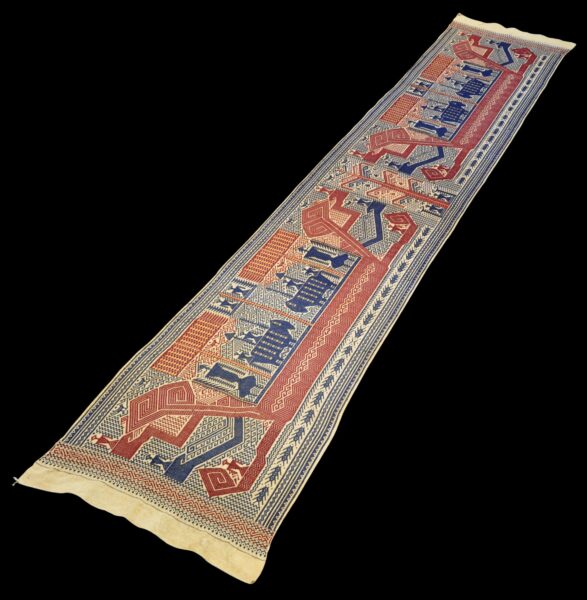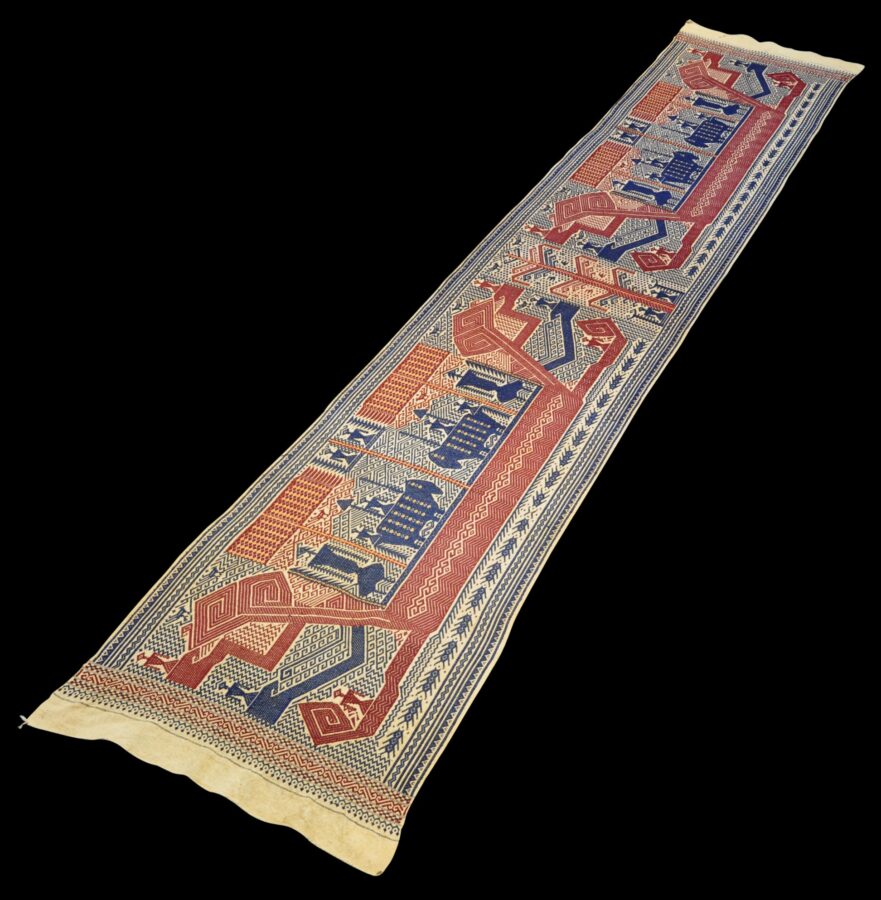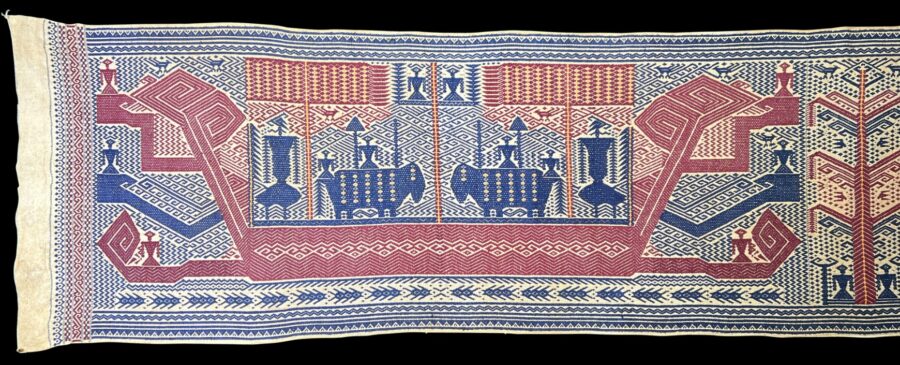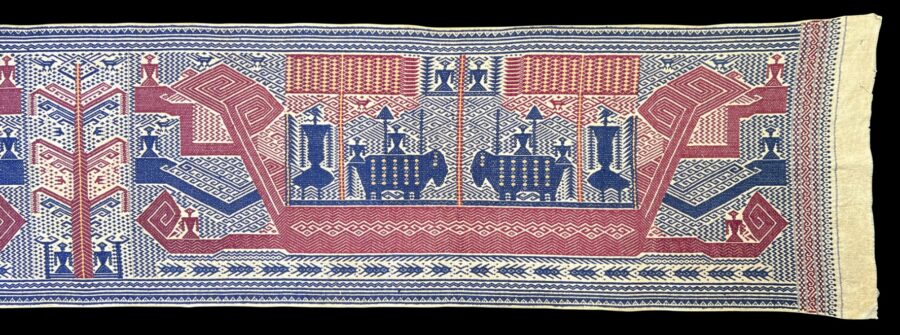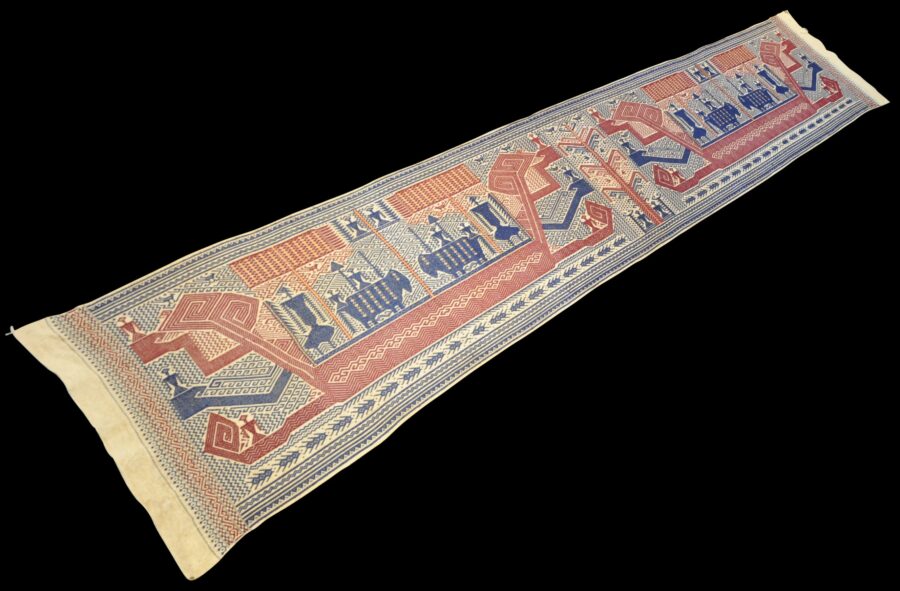This unusually long and rare palepai cloth is from the Kalianda district of Lampung, South Sumatra. It is more than 3 metres (10 feet) long, and features yellow, red and blues natural dyes. It has been woven as one long, continuous cloth.
The cloth is handwoven from handspun cotton with coloured silk thread and shows two impressive ships with elaborate prows and carrying large ancestor figures, some astride mythical horse-like creatures, as well as attendants. The ships are separated by a large tree-of-life motif. They sail on seas filled with fish.
Such a cloth was used by Lampung aristocrats of the penyimbang rank for display at the rites of passage of noble individuals, including marriage, and at important local ceremonies of state. The cloths adorned the walls of clan houses, and also the distinctive carved wooden thrones that the Lampung nobles used, and were the most prestigious of all cloths produced in Lampung. Relatively few were produced because only the elder members of the noble families were entitled to use them. The cloths were never exchanged or gifted, unlike other Lampung cloths, instead they stayed as heirloom cloths within noble families.
The transition imagery of the ship in such cloths is appropriate given their use in ceremonies which pronounced the rank of local rulers.
The depiction of ships had important ritual symbolism but also underscored the central nature of trade and seafaring to the coastal peoples of Sumatra.
The ships’ hulls are depicted in red and the details of the ships are in blue. The cotton used to weave the cloth has been dyed with natural vegetable dyes including indigo and turmeric which was used to obtain the rich orange-red effect.
The cloth is in excellent condition. There are no repairs, losses or insect damage. The colours have remained bright and their is little fading or soiling. The cloth might have come to the UK during the age of passenger steamships when such ships called into South Sumatra in the early 20th century on their way to Singapore and Batavia. It is a superb, museum-quality item.
References
Barnes, R., & M. Hunt Kahlenberg (eds), Five Centuries of Indonesian Textiles: The Mary Hunt Kahlenberg Collection, Delmonico Books, 2010.
Maxwell, R., Textiles of Southeast Asia: Tradition, Trade and Transformation, Periplus, 2003.
Maxwell, R., Sari to Sarong: Five Hundred Years of Indians and Indonesian Textile Exchange, NGA, 2003.
Schefold, R. (ed.), Eyes of the Ancestors: The Arts of Island Southeast Asia at the Dallas Museum of Art, Dallas Museum of Art/Yale University Press, 2013.


